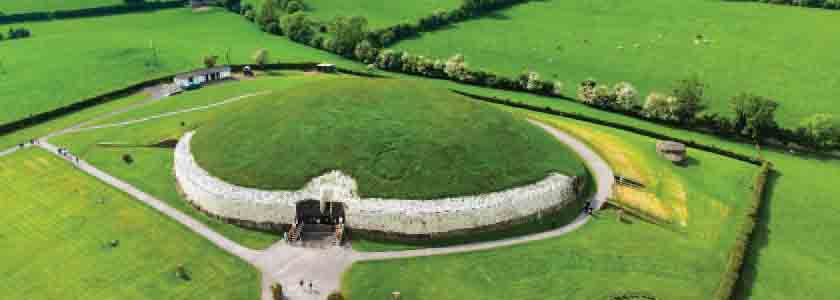DNA studies in Ireland shed light on ancient tomb builders

DNA studies are offering fascinating glimpses into early human activity in Ireland.
A slew of recent studies has uncovered incest, relations to Vikings and Normans, and ancient tomb builders.
Newgrange Stone Age Passage Tomb
A study in Nature used ancient genomics to identify a person who was likely part of group with such great status and clout that incest was sanctioned. The genetic data came from a burial site in Newgrange in northeast Ireland.
The finding meshes with monuments and other social status markers which began to appear in Europe around 4,000 BC, including intriguing passage tombs.
The results came from low-coverage genomic sequencing performed on
two Mesolithic and 42 Neolithic samples and used imputation with available
ancient genome sequences to fill in sequence gaps.
Deeper sequencing was
performed on a handful of remains, including an adult male born to first-degree
relatives—brother and sister, for example, or parent and child—whose remains
were found in a passage tomb aligned to solar positions.
Ireland Burials vs. Ancient Egypt Burials
The New York Times noted the similarities to the burials in Ireland and those in ancient Egypt.
“The finding, combined with other genetic and archaeological evidence, suggests that the people who built these mounds lived in a hierarchical society with a ruling elite that considered themselves so close to divine that, like the Egyptian pharaohs, they could break the ultimate taboos,” the Times wrote.
Researchers did not originally go hunting for evidence of incest, the Times added; instead, the project was part of a project to reconstruct the entire genetic history of Ireland and goes beyond standard lineage reports to instead explain social structure.
Evidence points to these individuals as having genetic ties to southeastern Europe—present-day Turkey—but another study points to the arrival of Normans and Vikings as having shaped Irish ancestry.
The passage tombs were constructed during a time when farming—a Neolithic trait—gradually took over Mesolithic fishing, hunting, and foraging. The DNA of those Mesolithic Europeans is found only as a faint remnant in modern populations.
Norse-Vikings arrived in Ireland beginning in the 9th century, while Anglo-Normans landed in Wexford around the 12th century.
“The genetics of the world’s estimated 80 million people who claim Irish heritage may now be more complicated than originally believed but research such as this could go some way to identifying if there are any specific traits or illnesses that are linked to these genetic clusters,” wrote the Irish Times.
That finding piggybacks off the original study to find evidence of Viking DNA in Ireland, though those findings only identified 10 genetic clusters in Ireland which were more in line with the island’s ancient kingdoms and provinces

 Processing
Processing
